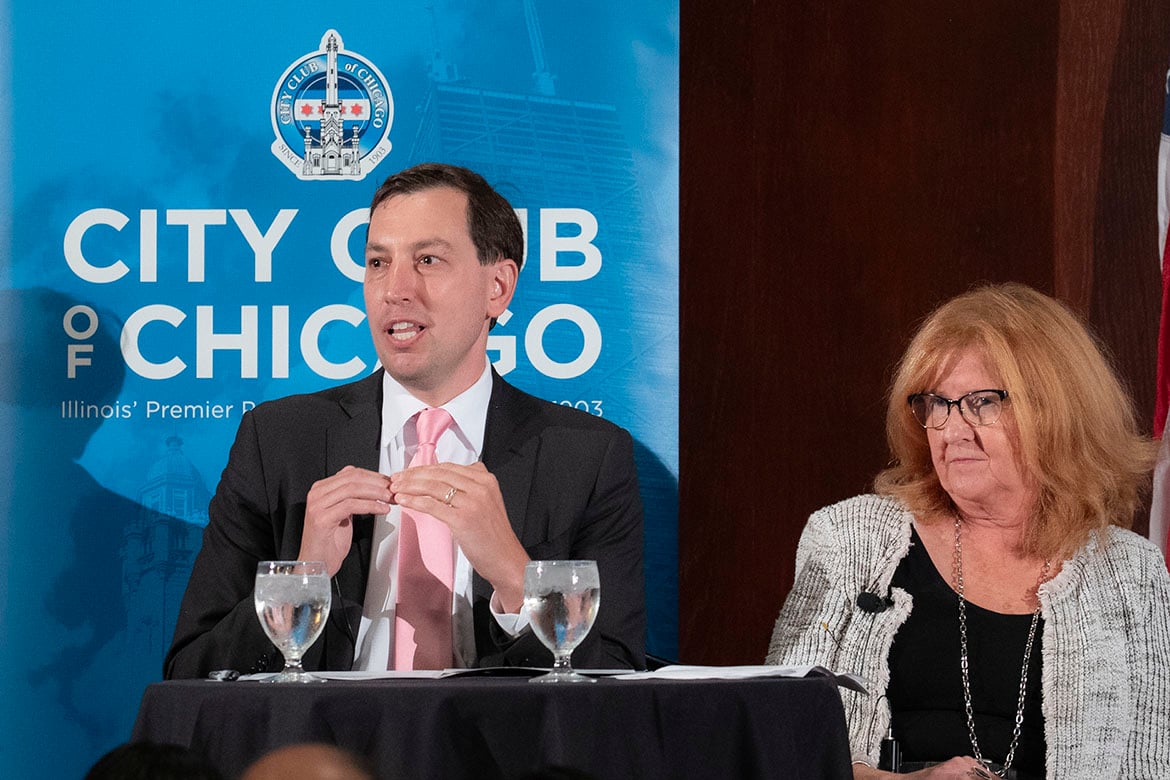There is an impending physician shortage in the U.S. that has clear repercussions for patients and the health system at large. The Association of American Medical Colleges projects that there will be a shortage of up to 124,000 physicians by 2034. Beyond the impending shortage is the urgent need to address physician burnout. That is because without a mentally and physically healthy workforce, doctors will continue to leave practice before retirement age.
“We all understand the pressure that's been put on health care writ large, but … understanding the factors that are leading to burnout, that are leading to physicians deciding to give up practice is critical,” Jesse M. Ehrenfeld, MD, MPH, president of the AMA and a practicing anesthesiologist, said during an event hosted by City Club of Chicago—a public affairs forum.
Two in five physicians in AMA survey data said they planned to leave practice within five years.
“This is why the AMA arrived at our Recovery Plan for America’s Physicians, which we launched a year ago,” Dr. Ehrenfeld said. “The bottom line is: this is about patient care. It’s about making sure that patients are able to see a physician when they need one.”
“If we are not thoughtful and aggressive in trying to reverse the tide of people choosing not to enter the profession, choosing to leave the practice early, not being thoughtful about workforce expansion, we are going to have a crisis on our hands,” he said.
“There are a lot of things that we know we can do and that we should be doing immediately,” Dr. Ehrenfed said. “For starters, we’ve got our AMA Recovery Plan that is trying to address the most urgent pressures on the practice of medicine, common challenges that every physician is facing today, things that are driving burnout, that are sucking the joy out of the practice of medicine and leading people to want to leave.”
Far too many American physicians experience burnout. That's why, as part of its Recovery Plan for America’s Physicians, the AMA develops resources that prioritize well-being and highlight workflow changes so physicians can focus on what matters—patient care.
In the wide-ranging City Club of Chicago discussion that touched on making technology an asset instead of a burden to physicians and addressing the fallout from the Supreme Court decision restricting race-conscious admissions, Dr. Ehrenfeld and others outlined some keys to addressing the physician shortage and doctor burnout.
Expand access for IMGs
There is a huge need for international medical graduates (IMGs) to provide care across the country, Dr. Ehrenfeld said, noting that “one-quarter of practicing physicians in the U.S. today were trained outside of the country, and we continue to struggle to expand access to bring physicians from other countries here.”
“There are things like the Conrad 30 program that we know would allow us to expand those opportunities to meet these needs, but unfortunately like many things that have gotten politicized that has become a challenge tied up in many other issues related to immigration,” he said. “But there’s a lot of opportunity there.”
Visit AMA Advocacy in Action to find out what’s at stake in clearing IMGs' route to practice and other advocacy priorities the AMA is actively working on.
Ditch the stigma against getting help
There is also “the challenge of the stigma when people are burned out and they need help,” Dr. Ehrenfeld said, noting “we have systems that have made it hard for students and for physicians to get help when they need it.”
“We have a long history in an unfortunate way when I apply for a medical license through the state or … credentialing at my hospital, I have to answer these questions about whether I’ve ever seen a psychiatrist or had behavioral health counseling—stigmatizing questions that make people not want to get help when they need,” he said.
“Now, fortunately, those things have started to change, and we’ve done a lot of work at the state, federal level with the Dr. Lorna Breen Health Care Providers Protection Act to make sure that we start to change some of that language and those approaches.”
“For our students, this generation’s stigma is significantly reduced. The number of students who are willing to share their own mental health experiences with their classmates and others, and the number of students and trainees who are pursuing mental health care is going up,” said AMA member Marianne M. Green, MD. She is vice dean of education at the Northwestern University Feinberg School of Medicine and also took part in the City Club of Chicago event.
Fix the system
“Burnout manifests in individuals, but it originates in systems,” Dr. Ehrenfeld said. That is why “the AMA has put a lot of effort into creating toolkits for health systems to try to re-engineer processes, to get to the system root cause of the drivers of exhaustion and burnout.”
This is where the AMA Joy in Medicine™ Health System Recognition Program can help act as a guide to building well-being and reducing physician burnout.





